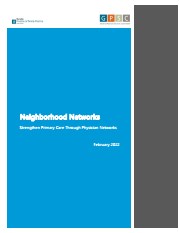2 public records – page 1 of 1. — Log in to view all records
Vancouver Division of Family Practice's 'How to Retire' Guide
https://www.jcc-resourcecatalogue.ca/en/permalink/divisionresource1312
- Division
- Vancouver Division of Family Practice
- Published Date
- 2019-02
- Description
- "This guide has been developed with a focus on retirement planning for clinic-based family practice physicians. This guide is to be used as a starting point and is not an exhaustive resource for all retirement planning."
- Division
- Vancouver Division of Family Practice
- Corporate Author
- Vancouver Division of Family Practice
- Published Date
- 2019-02
- Resource Type
- Guide
- File Type
- Originating web page
- http://www.divisionsbc.ca/vancouver/physicianretirementsupport
- Description
- This guide has been developed with a focus on retirement planning for clinic-based family practice physicians. This guide is to be used as a starting point and is not an exhaustive resource for all retirement planning.
Burnaby DoFP Neighbourhood Networks Case Study - Executive Summary
https://www.jcc-resourcecatalogue.ca/en/permalink/divisionresource1605
- Division
- Burnaby Division of Family Practice
- Published Date
- 2022-02
- Description
- "This document is the executive summary of the Burnaby DoFP Neighbourhood Networks case study. As part of GPSC commitment to the development of physician networks as a key component of primary care system change, the Burnaby DoFP Neighborhood Network case study explores the development and implementation of three neighborhood networks in Burnaby. The creation of neighborhood networks in Burnaby was prompted by family physicians who recognized the need to bring together family physicians from across local communities to increase their interconnectedness, provide opportunities for local Primary Care Network planning, and enable methods for sharing care with each other with the goal of improving patient access to medical care across Burnaby. Burnaby’s neighborhood networks have supported family physicians to connect socially, learn from each other, identify options for locum coverage and after-hours care, and support referrals to specialist care throughout the networks. Key outcomes: family physicians were able to increase patients’ access to care by referring patients to their family physician peers, expanding their use of locums, working on the development of an Urgent and Primary Care Clinic, and procuring additional healthcare resources for the neighborhood networks. A discussion of the neighborhood network's future goals and next steps is included."
- Division
- Burnaby Division of Family Practice
- Corporate Author
- General Practice Services Committee
- Published Date
- 2022-02
- Resource Type
- Summary
- File Type
- Description
- This document is the executive summary of the Burnaby DoFP Neighbourhood Networks case study. As part of GPSC commitment to the development of physician networks as a key component of primary care system change, the Burnaby DoFP Neighborhood Network case study explores the development and implementation of three neighborhood networks in Burnaby. The creation of neighborhood networks in Burnaby was prompted by family physicians who recognized the need to bring together family physicians from across local communities to increase their interconnectedness, provide opportunities for local Primary Care Network planning, and enable methods for sharing care with each other with the goal of improving patient access to medical care across Burnaby. Burnaby’s neighborhood networks have supported family physicians to connect socially, learn from each other, identify options for locum coverage and after-hours care, and support referrals to specialist care throughout the networks. Key outcomes: family physicians were able to increase patients’ access to care by referring patients to their family physician peers, expanding their use of locums, working on the development of an Urgent and Primary Care Clinic, and procuring additional healthcare resources for the neighborhood networks. A discussion of the neighborhood network's future goals and next steps is included.

